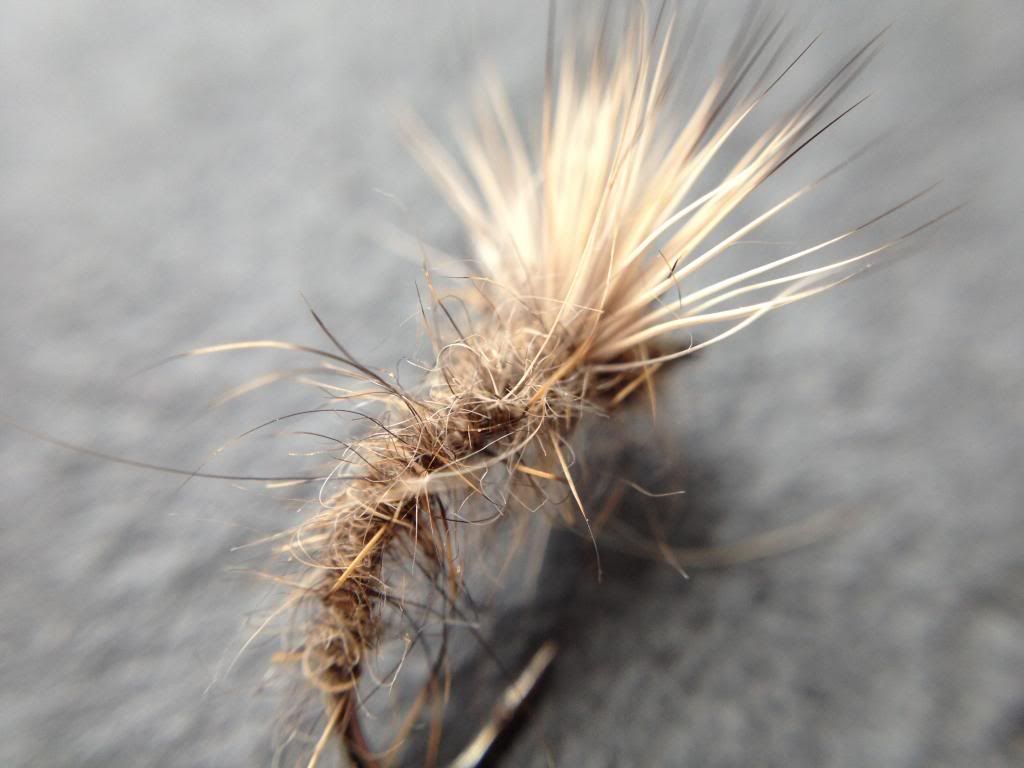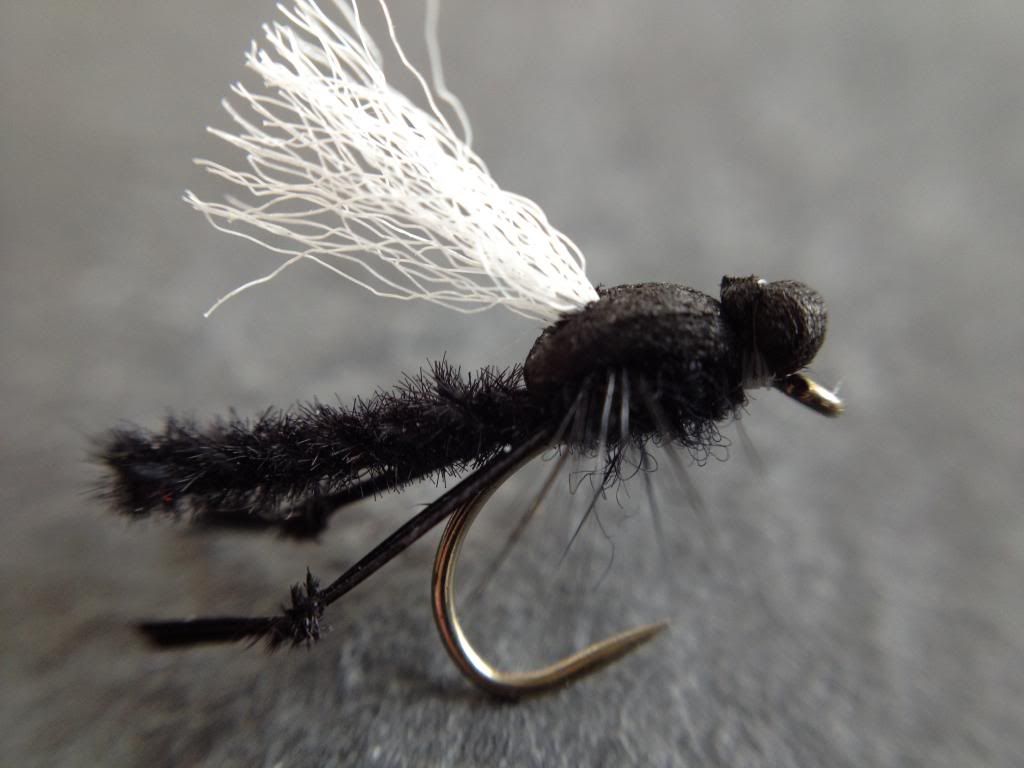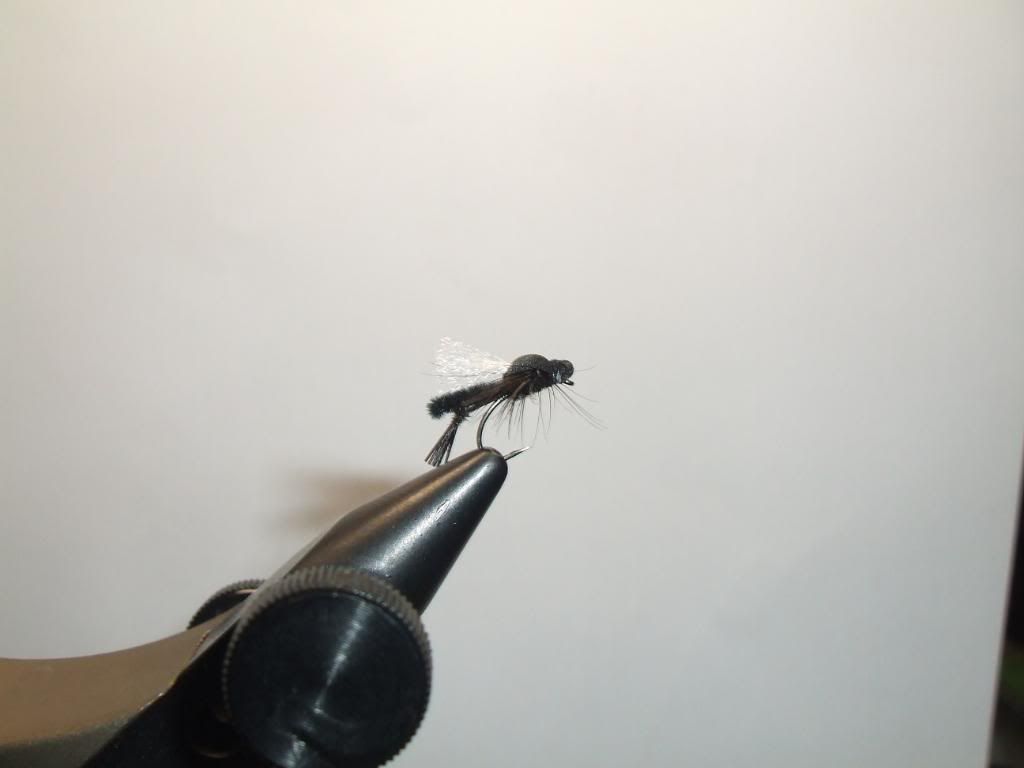Today I finally got round to taking my dad to a localish still-water; this trip has been long over due, in fact it was originally talked about last season.
We fished at Earith trout lakes. The water in this 12 acre gravel pit is clear with extensive weed-beds lining the bottom. Arriving at one O'clock there was a pleasant westerly breeze forming a nice ripple. I could see fish rising and jumping all over the lake. I had plans to creep around the edges trying to stalk fish. I figured a lot of the flies in my fly-box - although river patterns - should do well enough for stalking. I had tied up a few buzzers as it would be foolish to fish a still-water without them. I saw many pond/lake olives, sedges and chironomids hatching, the odd trout were close enough for me to see them chasing and taking hatching flies.
 |
| Not sure whether this is a lake or pond olive |
I walked around half of the lake, mainly to see if there were any lunkers patrolling in the margins. I couldn't spot anything close in, the only visible fish were those that were rising and jumping. Most of the fish were seemingly just out of casting range, occasionally the odd fish would come closer. Proving too tempting, I decided to head to an area where most of the activity was occurring.
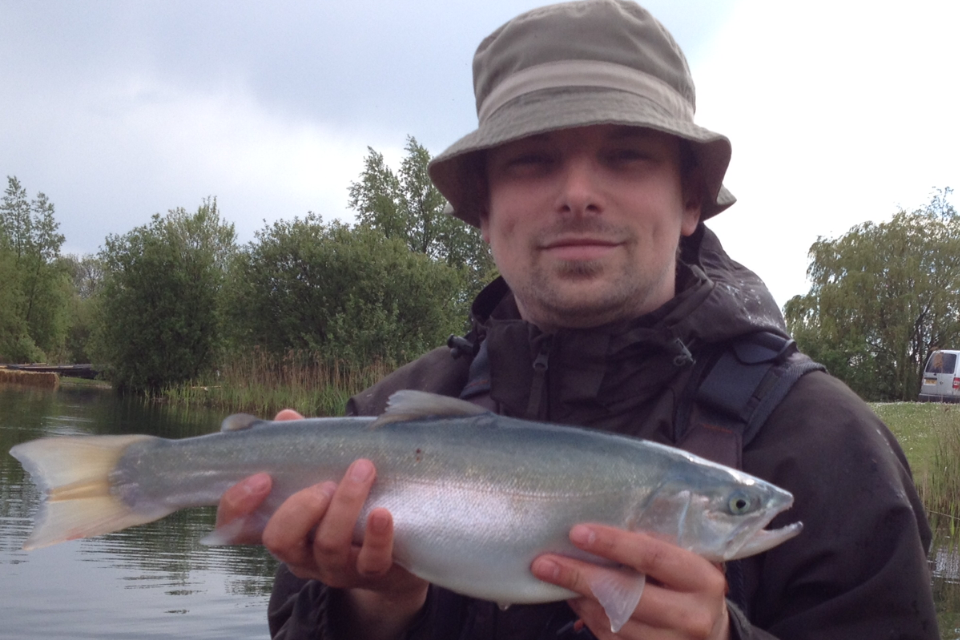 |
| My first blue trout |
Fly selection wasn't so easy; of course I have many river patterns, but most of them were relatively specific to what they imitated. I don't feel the fish were being particularly selective, I just needed something that looked like food. Last night I tied up three deer hair emergers. Rob Denson showcased this fly in the previous months Trout & Salmon magazine. I have never really fancied this fly, I know a lot of people rave about it, but it's just not caught my attention.
 |
| The DHE that caught all my fish today |
If you've read this blog much you'll know that I only fish rivers, small intimate and crystal clear. So as you can imagine I'm not equipped to fish for still-water rainbows. A new rod I bought secondhand a couple of weeks ago, was really the only thing I could see as being usable; a 10ft 4# Orvis Western3. I used this rod last week on a rainy morning fishing a sort of leader to hand. I found the rod very usable, with enough tip-action to deftly flick light nymphs. Of all my river rods it also casts a decent length of line, not a whole fly line, but certainly far enough.
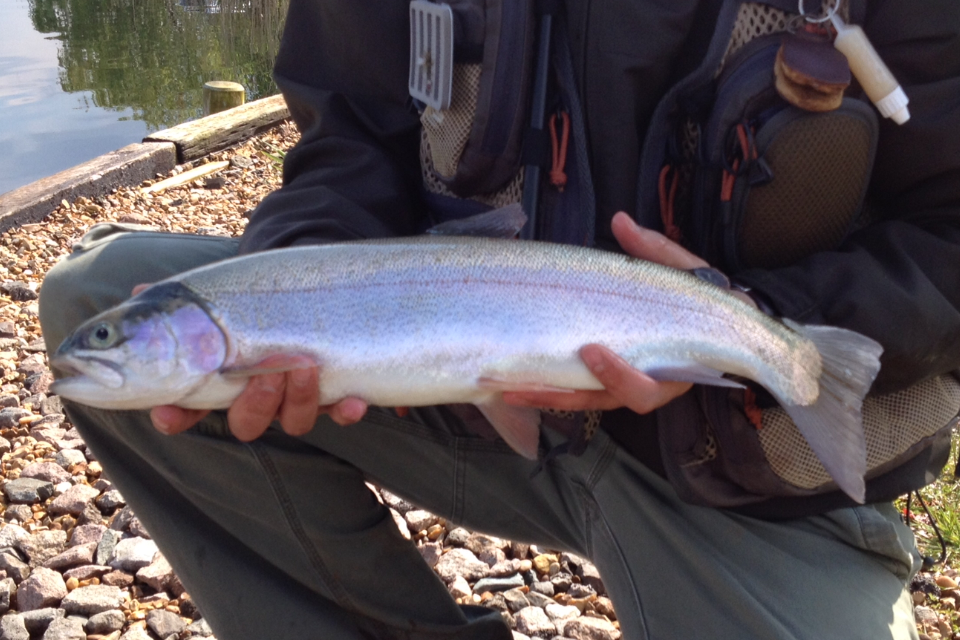 |
| The largest fish of the day |
So how did I do? Reasonable well in my eyes. I caught four trout; a blue - my first ever - and three rainbows. All four fish fell to a static DHE. I found various groups of fish within range allowing me to cast out and leave the fly there. I probably missed a dozen more takes, some were half-hearted miss takes and a few were my fault; often I was still thinking I'm fishing on a river and lifting too quickly. I thoroughly enjoyed the fight the fish gave me, the largest one of the day - a sleek, fit and fully tailed rainbow just under three pounds - took the fly and ran, no need to set the hook; it didn't quite take me to the backing, but the powerful surges gave me a smile. The rod handled the fish perfectly, I was only using a 0.16mm 4.9lb tippet and at no point did I feel that I didn't have control.
The occasionally heavy down pour, one accompanied by lightening and thunder saw me retreat under the old mans umbrella, but otherwise a pleasant afternoon, especially catching all my fish off the surface.
 |
| It rained hard at times |
A little more on Wyatt's Deer hair emerger.
I tied these ones on Daiichi 1167 Klinkhamer hooks and used Nature's Spirit Comparadun hair. I tied these as Rob Denson described in his T&S article, even without Rob's article I would have tied down the deer hair butts and covered them, it looks neater. You can find the Daiichi hooks
here and the comparadun hair
here, my only criticism of the comparadun hair is the light tips, there is a dyed medium dun available which may be more what I'd prefer.







